
How to choose the transmission equipment in the security monitoring industry is a very important link. This paper introduces the optical fiber cutting, splicing and the small knowledge of coiling fiber. How to choose the suitable optical fiber in our own project? How many types of optical fibers are there? What are the characteristics of optical fiber transmission? How much do you know about optical fiber engineering technology?Next, TUMTEC Science Popular Class will answer for you one by one.
Optical cables can be divided into indoor, outdoor, branched and distribution cables according to different applications. Optical fibers can be divided into single-mode and multi-mode according to different transmission modes. Single-mode optical fibers are commonly used for monitoring.
Single-mode optical fibers: Optical fibers that transmit only one mode optical signal. The transmission distance of single-mode optical fibers is far, up to tens of kilometers.
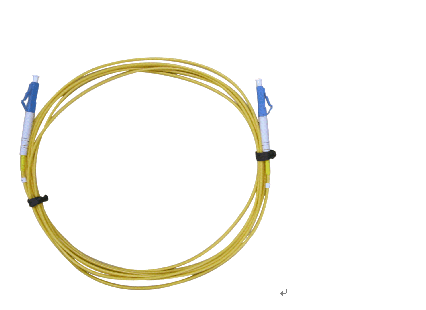
Multimode Optical Fiber: Optical Fiber that can transmit many kinds of optical signals. The transmission distance is up to 2 kilometers.
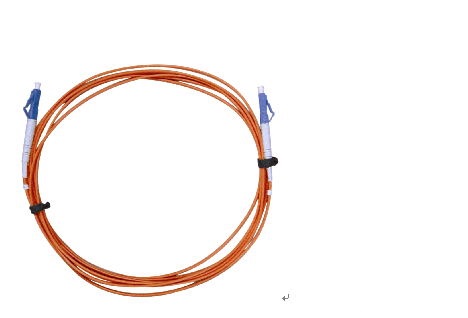
In general, optical fibers are connected as shown in the figure below:

一、Types of Optical Fibers
The common outdoor cable is the container with loose sleeve as the core, which is the most common way of laying optical fibers;
the indoor cable laying is a tight sleeve.
The most common structure of optical cable is layered twisted cable, which is generally used for more than 12 core cables. The inner part of the cable can accommodate multiple loose sleeves, and each loose sleeve can accommodate 6-12 core fibers as the basic unit. The layered twisted cable is the central strengthening component, and the loose sleeve is surrounded by the central strengthening core, as shown in the following figure:
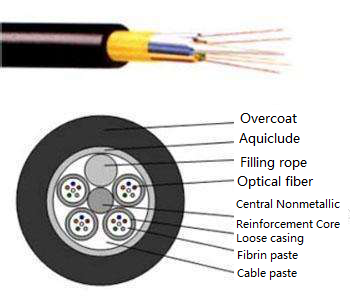
The structure of outdoor optical cables with 12 cores or less is the central bundle tube type. This type of optical cables has a loose central sleeve with 1-12 cores inside and two parallel wires in the outer jacket. The structure is as follows:
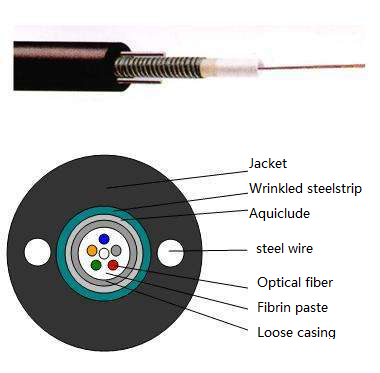
Multi-core optical fibers (2, 6, 8, 12 cores, etc.) are bonded with special materials to form a group or a generation, which is like a ribbon optical cable. The ribbon optical cable with 6 cores and 12 cores is commonly used. Nowadays, there are fewer and fewer common single-core optical cables with large number of cores. Most of the cables with more than 72 cores are ribbon optical cables.
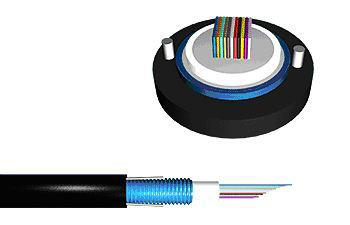
二、 Optical Fiber Matching Equipment
Optical fibers can not be used alone, so there is a complete set of light supporting equipment:
1. Optical Fiber Distribution Frame (Box): This box is designed to protect optical fibers and tail fibers, which are connected to optical transceiver switches or optical terminals;
2. Optical fiber terminal box: The terminal box is welded together by two optical fibers.
3. Tail: One end of the tail is fused with the optical fiber, and the other end is connected with the optical transceiver or switch.
4. ODF Optical Fiber Distribution Frame and Optical Coupler: In some large and medium-sized monitoring projects, ODF Optical Fiber Distribution Frame and Optical Coupler may be used. ODF Optical Fiber Distribution Frame is mainly used in computer room, which can make many optical fibers more regular and easy to maintain.
5. Fiber optic transceiver: called photoelectric converter, is the device that converts the optical port and the electrical port. It is used in pairs. The electrical port connects the switch and the optical port connects the tail fiber.
6. Optical fiber module: The optical fiber module is mainly used in the optical fiber switch. The tail fiber and the switch can be connected directly through the optical fiber module, and the optical fiber transceiver can be omitted, but the price of the optical fiber switch is higher.

三、 Characteristics of Optical Fiber Transmission
1. The transmission distance is long, the single mode can reach tens of kilometers, and the transmission signal picture clarity is not affected in the transmission process.
2. It has strong anti-interference ability and is basically free from electromagnetic and strong electric interference in the transmission process.
3. The broadband of optical fiber is not limited in theory, so a single optical fiber can drive hundreds of cameras. It should be no problem in theory, but it is necessary to select appropriate optical transceiver according to the number of signal routes transmitted by optical fiber. If it is less than 10 monitoring points, it is possible to select 100-megabit transceiver, higher than 10 monitoring points, and it is necessary to select Gigabit transceiver.
4. The light can be buried or overhead. The overhead should be 6-7 meters away from the ground and not less than 50 meters when buried.
5. Optical fiber wiring process is important to avoid bending.
Garnett is a brand manufacturer of industrial transmission equipment. Its optical fiber transceivers, industrial switches, optical terminals and so on are widely welcomed in the market. Welcome to know more about the product details.
If you want to know more ,click here.
Copyright © 2021 Guangzhou Weyes Network Technology Co., Ltd. | All Rights Reserved